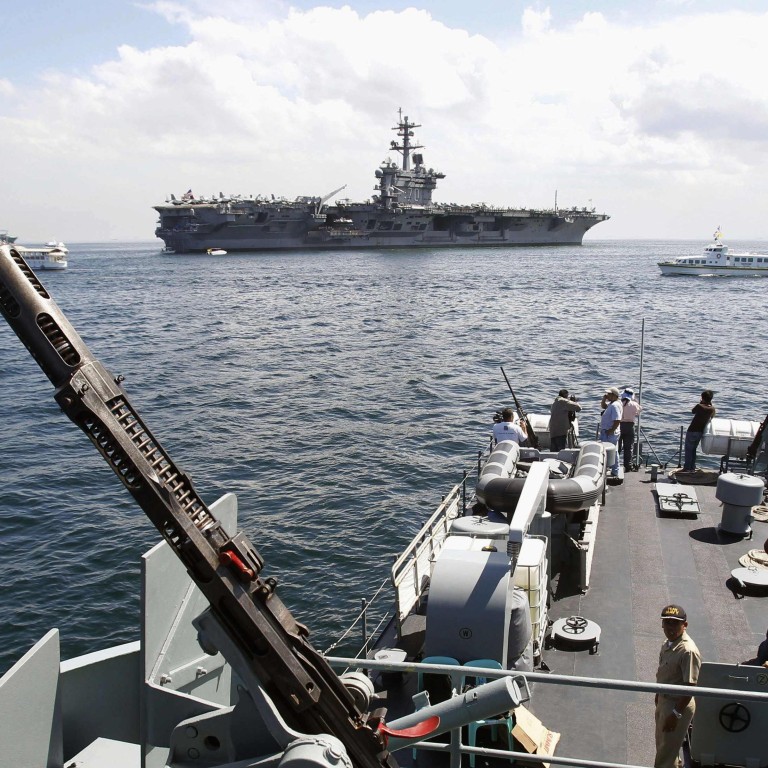
China replaces South Korea as East Asia’s largest defence equipment importer
China overtook South Korea as East and Southeast Asia’s largest importer of defence equipment last year as imports in the region rose more than eight times faster than global trade of defence equipment.
Regional growth in imports was led by China as the world’s second-largest economy faces territorial disputes with neighbours in the East China Sea and South China Sea, according to figures released on Thursday by the consultancy IHS in its annual Balance of Trade study.
China’s imports increased 52.6 per cent to US$2.3 billion last year. They stood at US$1.5 billion in 2012. The study predicted Chinese imports would grow by 13.8 per cent this year to US$2.6 billion.
Chinese defence-related exports reached US$1.9 billion last year, up 4.4 per cent.
Paul Burton, Singapore-based defence content director for IHS, said imports from Russia had ballooned the People’s Liberation Army’s spending abroad.
“Russia increased its exports from roughly US$3.5 billion to US$4.5 billion, mostly due to increased engine and fighter jet trade with China,” he said. Deliveries and upgrades of air defence equipment, such as aircrafts and helicopters, have driven the regional market overall, he added.

South Korea, which two year’s ago was the region’s largest arms importer, has benefitted from this trend. Last year, the Philippines expressed its intent to buy 12 T-50 Golden Eagle fighter jets from South Korean. Earlier this month, Indonesia put to use a first squadron of 16 such jets.
South Korea’s exports of defence equipment rose 91.6 per cent to US$613 million last year. IHS estimates that the country is set to overtake China as the region’s largest exporter of such equipment by next year.
“South Korean industry is reaching a ‘tipping point’,” said Burton. “Its indigenously produced defence equipment has reached sufficiently high quality to be competitive in the emerging markets,” he said. “This will likely supplant some of the major Western companies in the process.”
However, Burton cautioned that China might lead the ranking regionally in the more distant future. “China’s export capabilities are still emerging,” he said.
Defence-related imports in East and Southeast Asia reached US$12.2 billion last year, according to IHS, up 24.5 per cent compared to 2012. This compares to a global increase of 3 per cent to US$67.6 billion in trade of defence equipment last year.
Indonesia’s imports grew 167.7 per cent to US$1.7 billion. Malaysia’s increased 40.6 per cent to US$610 million. Cambodia’s, while relatively low, rose a staggering 850 per cent, to US$95 million. Taiwan’s imports fell by 17.4 per cent to US$928 million.
The US is still the region’s largest supplier of defence equipment. Globally, nine out of the 10 leading defence equipment manufacturers were based in the US, the report said.
Ben Moores, the study’s author and senior analyst with IHS Jane’s Aerospace and Defence Forecasting, noted that global arms trade saw another tidal change last year with India surpassing Saudi Arabia as the US’ largest defence market.
“India’s growth has been dramatic,” he said. The world’s second-most populous nation bought US$1.9 billion of American defence equipment, eight times more than it did in 2009. Globally, India’s armed forces bought equipment worth US$5.9 billion last year, more than twice as much as China did.
“India has become a major player for the US,” said Burton. “US companies have started to make inroads into India after a long time of not working with the market”, he said.
Burton expected the country to remain a dominant importer due to its failure to establish a domestic defence industry and a backlog on ordered imports.
He cautioned, however, that its defence spending wasn’t fully thought-through. “Despite massive imports there are crucial gaps, especially in the maritime domain where India continues to fall behind.”
Earlier this month, China held a rare naval exercise in the eastern Indian Ocean, alarming Indian observers.

